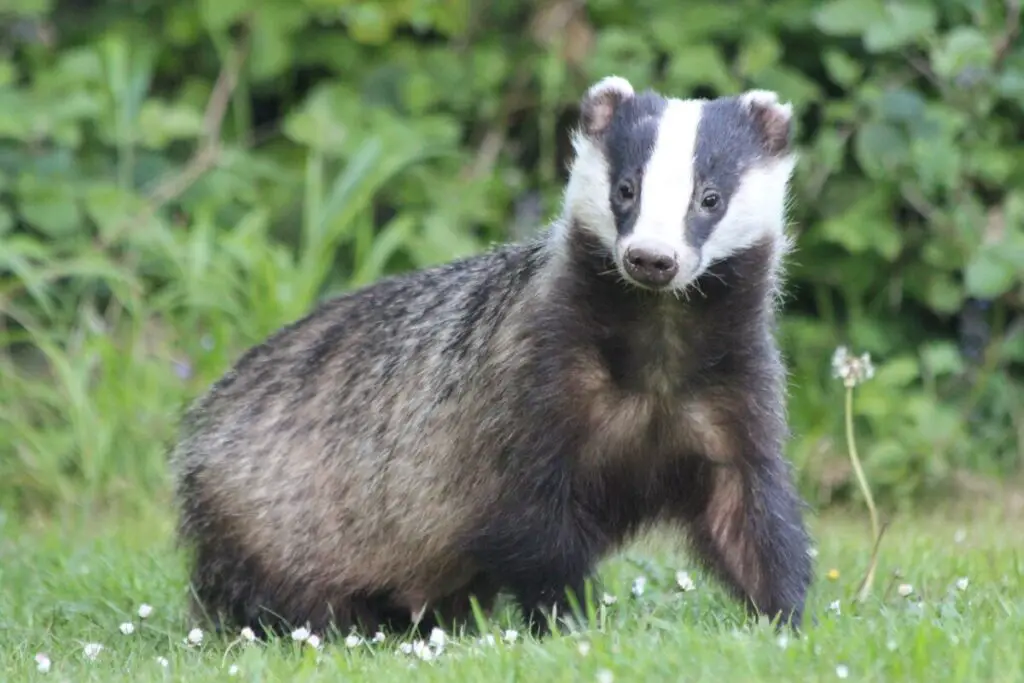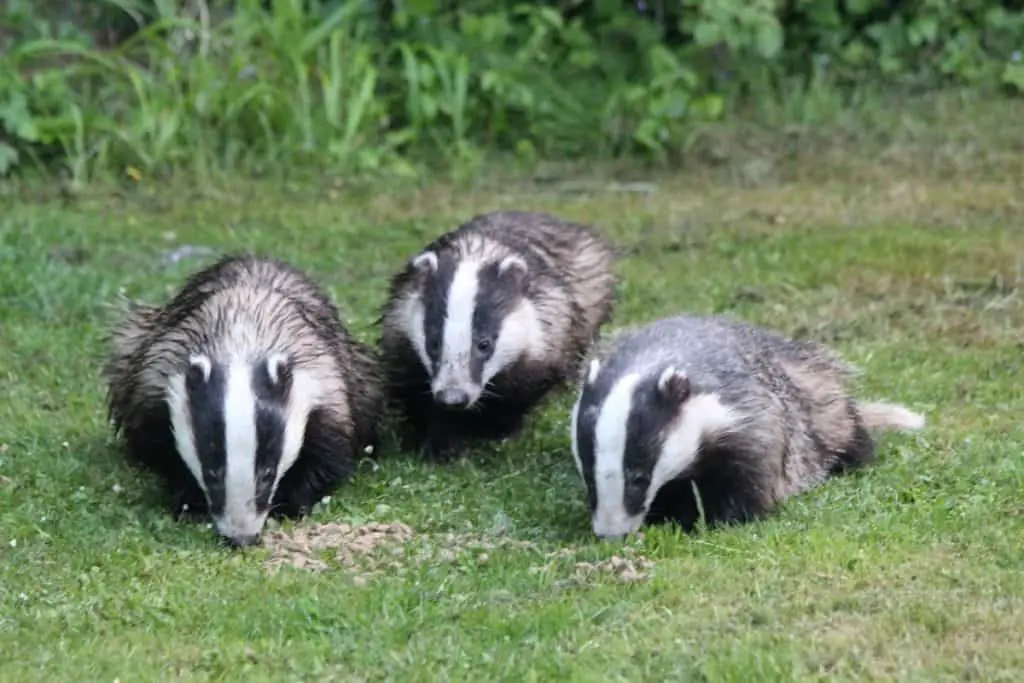The Badger is a burrowing mammal found in various parts of the world. With its distinctive black and white striped face, stout body, and powerful forelimbs equipped with sharp claws for digging, this animal has earned a reputation as one of the toughest creatures in nature.
Despite being widely admired for its resilience and tenacity, badgers have also been subject to persecution from humans due to their perceived threat to livestock and crops. The scientific name for badgers is Meles meles, which belongs to the family Mustelidae along with other carnivorous mammals such as weasels, otters, ferrets, and minks.
Badgers are nocturnal animals that spend most of their time underground in complex tunnel systems called setts. They are omnivores that feed on a variety of foods including insects, small mammals, birds, fruits, and roots.
In addition to their ecological importance as seed dispersers and soil engineers, badgers play an important role in folklore and mythology around the world. However, despite their cultural significance and ecological value, badgers continue to face threats from habitat loss due to urbanization and intensive agriculture practices as well as human-wildlife conflicts arising from misconceptions about their behavior.

Physical Characteristics Of Badgers
Badgers are medium-sized carnivorous mammals with short, powerful legs and a stout body. They have a distinctive flattened head with small ears and sharp claws that enable them to dig extensive burrows. The fur of most badger species is grayish-brown or black, while the American Badger has white stripes on its face and forelegs.
Badgers are known for their remarkable burrowing behavior which they use for shelter, hibernation, and rearing young ones. Their complex underground homes can be up to 30 feet in length with multiple entrances and interconnected tunnels leading to various chambers used for different purposes such as nesting, sleeping, storing food, and defecating.
In addition to being solitary animals who prefer living alone in their own dens, some species also exhibit social structures where groups may share territories or defend resources like food from other badgers or predators. Overall, badgers’ physical characteristics allow them to effectively adapt to their environment by creating safe spaces through diligent digging efforts while potentially engaging in communal behavior when necessary.
Distribution And Habitat
Badgers are known for their physical characteristics, such as their stocky build and short legs, which make them well-adapted to digging. Their powerful forelimbs, sharp claws, and dense fur also serve various purposes in their daily lives. However, understanding the distribution and habitat of badgers is equally important to comprehend their ecological role.
Population dynamics play a crucial role in shaping the range expansion of badgers. Badger populations have been increasing over recent years due to conservation efforts aimed at protecting these animals from hunting and habitat destruction. As a result, there has been an increase in their range across different regions. This expansion can be seen through increased sightings of badgers in areas where they were previously absent or low in numbers.
Understanding population dynamics is essential for monitoring changes in badger populations and predicting how they will continue to expand into new ranges.
Three interesting facts about the distribution and habitat of badgers:
- Badgers prefer open grasslands with easy access to food sources like rodents.
- They are found on nearly every continent except Australia and Antarctica.
- The American Badger has more restricted distribution compared to other species and is mainly found within North America.
Range expansion is a natural process that allows for genetic diversity among animal populations by allowing individuals to mate outside of their immediate area. Therefore it’s imperative that we understand the mechanisms behind this phenomenon so we can ensure that habitats remain intact and all flora/fauna thrive together without negative impacts from human activities or climate change on ecosystems worldwide.
Diet And Feeding Habits
Carnivorous tendencies are a significant characteristic of badgers. They mainly feed on small mammals, such as rodents and rabbits, but they also eat insects, birds, reptiles, amphibians, and carrion. Their preference for prey is determined by their habitat and season.
In the summer months when food availability is high, badgers tend to consume more insects than in winter months when they have to rely more on small mammals. Badgers are opportunistic predators that will scavenge if necessary. However, animal protein makes up most of their diet.
Despite being carnivorous animals, they occasionally supplement their diet with plant material like fruits or nuts. Badgers’ eating habits play an essential role in maintaining ecological balance in their habitats since they help control rodent populations and spread seeds through excretion of undigested fruit parts.
Importance In Ecology And Ecosystems
After learning about the dietary habits of badgers, one might assume that their ecological role is negligible. However, this couldn’t be further from the truth.
Badgers play a vital role in maintaining ecosystem balance and health. As opportunistic omnivores, they consume a variety of prey including small mammals, insects, fruits, nuts, and even carrion. This diverse diet allows them to control populations of pests like rodents and insects while also aiding in seed dispersal.
Unfortunately, habitat loss has resulted in declining badger populations worldwide. As burrowing animals who require large territories for foraging and reproduction, they are particularly vulnerable to human development such as urbanization and agricultural expansion.
The loss of badgers can have cascading effects on entire ecosystems as their absence may lead to uncontrolled pest outbreaks or reduced seed dispersal which impacts plant communities. It’s important that conservation efforts focus not only on protecting individual species but also on preserving the complex web of interactions between species that make up our planet’s biodiversity.
Cultural Significance And Mythology
Symbolic meanings of badgers vary across cultures and regions. In Native American folklore, the badger is often associated with healing and medicine due to its ability to dig deep into the earth’s surface and find medicinal roots. Some tribes also believe that badgers have supernatural powers and can communicate with spirits.
The Chinese consider the badger a symbol of happiness, prosperity, and good fortune. In some European countries such as Germany, the badger is believed to be an omen of death or disaster.
Badger related artwork and crafts are prevalent in many cultures worldwide. For example, in Japan, there is a popular game called ‘tanuki’ which features a mischievous raccoon dog character who wears a hat made from a badger pelt. In Europe during medieval times, it was common for people to wear clothing adorned with badges depicting various animals including badgers.
Badgers have also been featured prominently in children’s literature such as Beatrix Potter’s ‘The Tale of Mr. Tod’ where two main characters are portrayed as rivaling badgers. Overall, the cultural significance and mythology surrounding badgers highlight their importance in human societies throughout history.
As evidenced by their representation in art, folklore, and legends around the world, badgers have played significant roles throughout different cultures spanning centuries. From being revered as symbols of healing to feared omens of doom; these elusive creatures hold powerful symbolic meaning across continents. Their presence has become embedded within numerous aspects of culture ranging from games to literature making them immortalized creatures whose legacy will live on forevermore through our artistic expressions and storytelling traditions alike.
Ten British Mammals to Spot in January: A Winter Wildlife Guide

Threats And Conservation Efforts
The cultural significance and mythology surrounding badgers has been an important aspect of human history for centuries. In many cultures, the badger is often depicted as a wise and respected animal, known for its strength and perseverance. The Native Americans believed that the badger was capable of healing sickness and injury through its powerful spirit, while in Chinese culture, it represents fortune and wealth. Even in modern times, we can see examples of this reverence with the use of badger images in logos and mascots for sports teams.
Despite their revered status in many cultures, badgers face numerous threats to their survival today. One such threat is poaching which involves illegal hunting or trapping of these animals for their fur or meat. This practice has led to a significant decline in the global population of badgers over time.
To combat poaching prevention efforts have been enacted by governments around the world to protect them from harm. Habitat restoration is another key action taken towards conservation efforts aimed at ensuring that these animals can thrive in safe environments free from habitat loss due to urbanization or development activities. By restoring natural habitats like forests, wetlands etc where they live, several organizations are striving hard to preserve this magnificent creature’s future generations.
In addition to these efforts, research continues on how best to support the growth of stable populations across different regions globally via scientific breeding programs aimed at increasing genetic diversity within some reserve areas designated specifically for Badgers protection across various countries worldwide without posing any danger to humans living nearby .
The fight against extinction cannot be won overnight but with sustained actions implemented now let us hope that future generations will still enjoy seeing these elusive creatures grow up healthy in nature’s wonderful environment!
Conclusion
The badger is a fascinating animal that has captured the interest of humans for centuries. Known for their distinctive black and white striped faces, badgers are found in various habitats across the world.
They play an important role in ecosystem maintenance by controlling rodent populations and aerating soil through burrowing. Despite their ecological significance, badgers face numerous threats such as habitat loss and fragmentation, illegal hunting, and road accidents.
Conservation efforts have been implemented globally to protect these species from extinction. An interesting statistic regarding badgers is that they can dig tunnels up to 10 meters long within minutes using their powerful claws.
This amazing ability helps them find food quickly while also providing shelter during harsh weather conditions. Overall, it’s crucial to continue learning about this incredible creature and taking action to ensure its survival in the wild.
